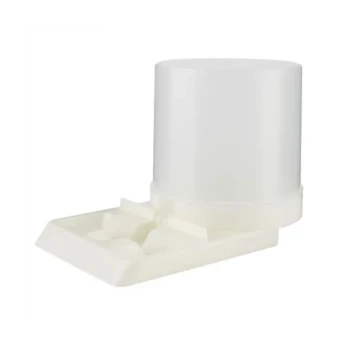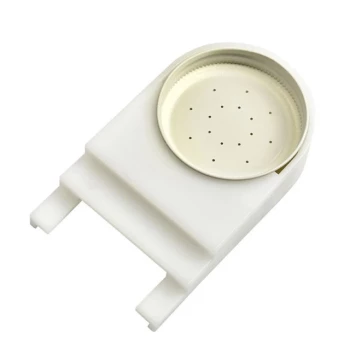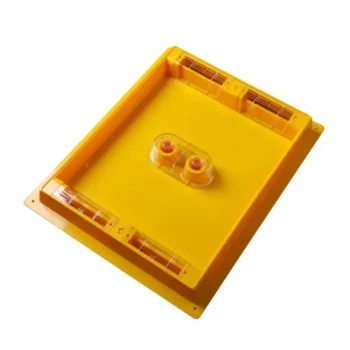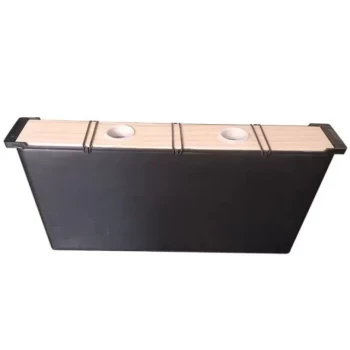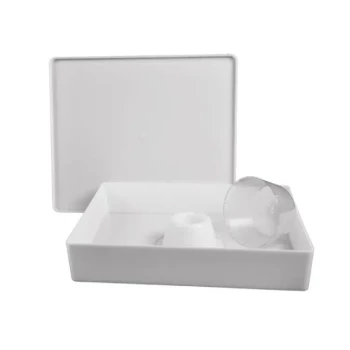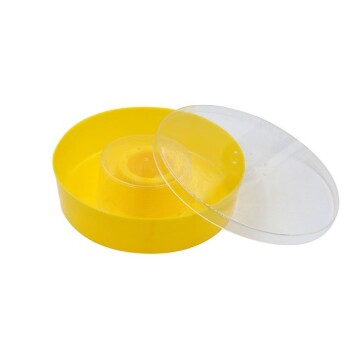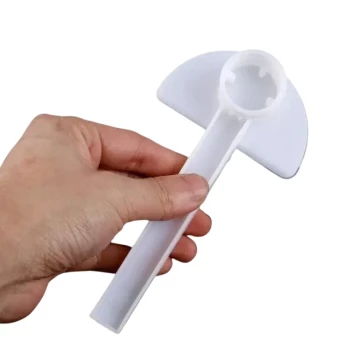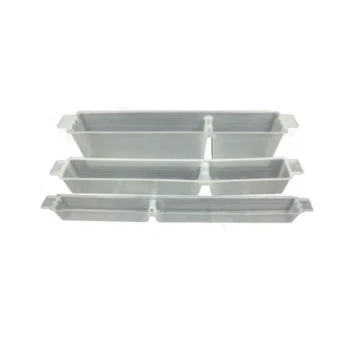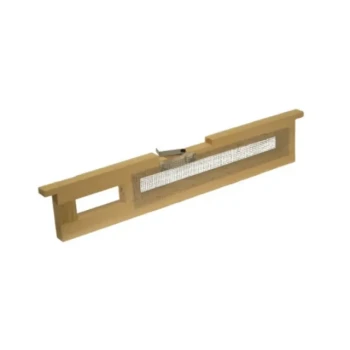For most beekeepers, especially those with a few hives, a top feeder is the best choice. This style of feeder is placed on top of the hive body, making it exceptionally safe from pests and easy to refill with minimal disturbance to the colony. Top feeders hold a large volume of syrup, which is ideal for rapidly building up a colony's food stores in the spring or fall.
The "best" bee feeder is not a single product, but rather the right tool for a specific goal. Your choice depends entirely on whether you need to feed quickly or slowly, how many hives you manage, and your priority for convenience versus cost.
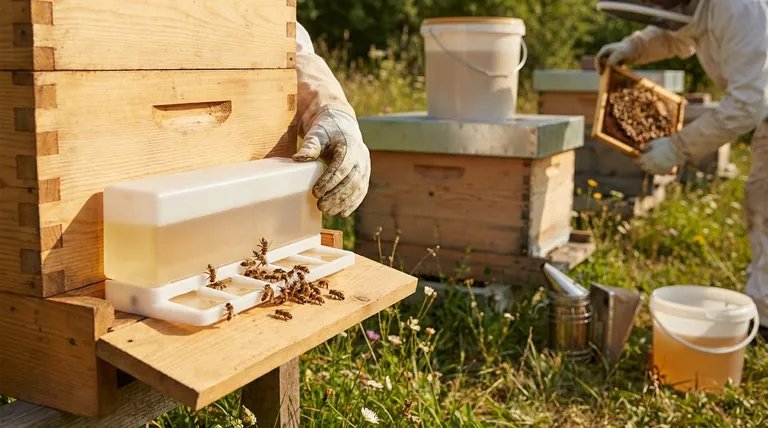
Why the Feeder You Choose Matters
Feeding bees is a fundamental part of responsible beekeeping. It's done not to harvest the sugar syrup, but to support the colony's health and survival.
Supporting Colony Growth
In early spring, supplemental feeding provides the resources a colony needs to expand its population quickly, ensuring it is strong enough for the main honey flow.
Sustaining Through a Dearth
During periods when natural nectar is scarce, such as a dry summer, feeding prevents the colony from starving and allows them to continue raising brood.
Preparing for Winter
In the fall, after honey supers are removed, beekeepers feed heavily to ensure the bees have more than enough stores to survive the long, cold winter months.
A Breakdown of Common Feeder Types
Each feeder style offers a distinct set of advantages and disadvantages. Understanding them is key to making an informed decision.
Top Feeders (Miller, Tank, or Pail Style)
These feeders sit on top of the uppermost hive box, enclosed by an empty super and the outer cover. They are widely considered the best all-around option for most beekeepers.
Advantages include large capacity, protection from robbing by other insects, and the ability to refill them without fully opening the hive.
Disadvantages can include the risk of bees drowning in some open-tank designs, though modern versions often include screens or floats to prevent this.
In-Hive Frame Feeders (Division Board)
A frame feeder is a thin plastic container shaped like a hive frame. It's placed inside the hive body, taking the place of one or two frames.
Advantages are that the feed is kept within the warmth of the hive and is well-protected from robbers.
Disadvantages include a smaller capacity, the necessity of opening the hive to refill, and a significant drowning risk if floats are not used. They also reduce the space available for the queen to lay eggs.
Entrance Feeders (Boardman Feeders)
These are small feeders that sit at the entrance of the hive, typically using an inverted jar to dispense the syrup.
Advantages are that they are inexpensive and make it very easy to monitor the syrup level at a glance.
Disadvantages are significant. Their placement at the entrance can loudly advertise a food source, promoting robbing from other hives. They also have a very small capacity and expose the syrup to the elements.
Understanding the Trade-offs
Choosing a feeder involves balancing the needs of your bees with the realities of your beekeeping operation.
Feeding Speed: Rapid Buildup vs. Slow Stimulation
Large-capacity top feeders and pail feeders are designed for rapid feeding. This is ideal when you need to quickly load a hive with pounds of food for winter.
Frame feeders or smaller contact feeders provide a slower, steadier supply of syrup. This can be better for stimulating brood production in the spring without overwhelming the colony.
Scale of Operation: A Few Hives vs. Commercial Yards
For a beekeeper with a handful of hives, the convenience and safety of a well-designed top feeder is almost always worth the investment.
For commercial beekeepers managing hundreds of hives, efficiency is paramount. Punching holes in bucket lids or using large cans is the standard because it is fast, cheap, and effective at a massive scale.
The Risk of Robbing and Drowning
Entrance feeders are the highest risk for inciting robbing, which can be devastating to a weak colony.
Frame feeders and open-style top feeders present the highest risk of bees drowning. Always choose models with built-in screens, ladders, or add your own floats (like wood chips or corks) to give bees a safe place to land.
Making the Right Choice for Your Goal
Select your feeder based on your primary objective for the colony at that moment.
- If your primary focus is safety and ease of use for a new hive: Choose a modern top feeder with built-in screens or floats to prevent drowning.
- If your primary focus is rapidly feeding a colony for winter: Use a large-capacity pail or Miller-style top feeder to deliver a large volume of syrup quickly.
- If your primary focus is stimulating slow, steady colony growth: A frame feeder is an effective choice, as it provides a consistent but limited food source.
- If your primary focus is managing dozens of hives efficiently: Adopt the commercial method of using large buckets or cans as top feeders.
Ultimately, matching the right equipment to your specific goal is the hallmark of effective and responsible beekeeping.
Summary Table:
| Feeder Type | Best For | Key Advantage | Key Disadvantage |
|---|---|---|---|
| Top Feeder | Most beekeepers, rapid feeding | Large capacity, safe from robbers | Potential drowning risk (mitigated with screens) |
| Frame Feeder | Slow, steady colony growth | Feed is kept within the hive's warmth | Smaller capacity, reduces brood space |
| Entrance Feeder | Budget-conscious, easy monitoring | Inexpensive, easy to check levels | High risk of robbing, small capacity |
Equip Your Apiary with the Right Feeders from HONESTBEE
Choosing the right feeder is critical for colony health and honey production. As a trusted wholesale supplier to commercial apiaries and beekeeping equipment distributors, HONESTBEE provides durable, high-capacity feeders designed for efficiency and bee safety.
We help you:
- Scale your operation with bulk feeder options perfect for large-scale beekeeping.
- Improve hive management with equipment that minimizes disturbance and maximizes feeding efficiency.
- Ensure bee health with feeders that reduce risks like robbing and drowning.
Ready to optimize your feeding strategy? Let's discuss your specific needs and our bulk pricing.
Contact HONESTBEE today for a quote on commercial-grade beekeeping supplies!
Visual Guide
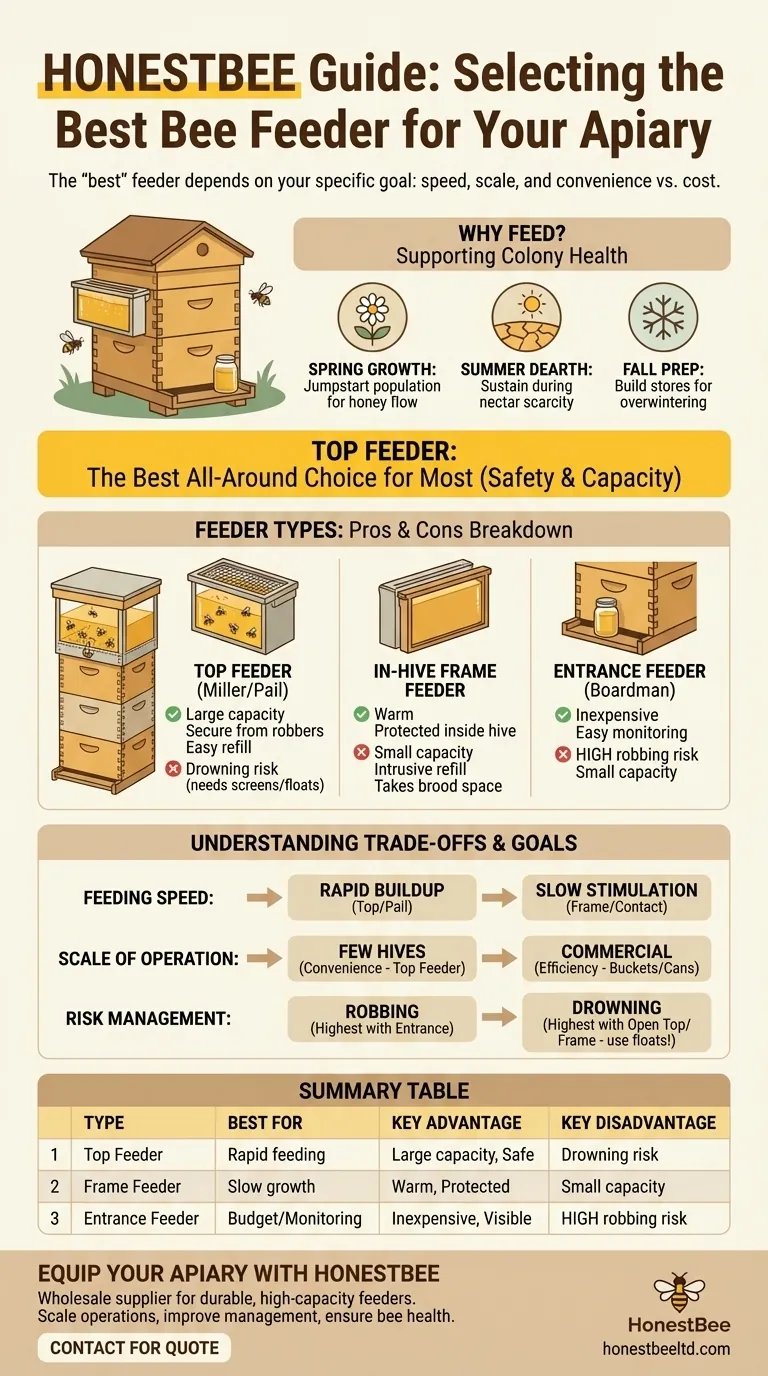
Related Products
- HONESTBEE Entrance Bee Feeder Professional Hive Nutrition Solution for Beekeeping
- Classic Boardman Entrance Bee Feeder Hive Front Feeding Solution
- Boardman Entrance Bee Feeder Durable Galvanized Steel and Wood Construction for Beekeeping
- Professional Hive Top Bee Feeder for Beekeeping
- HONESTBEE Professional Entrance Bee Feeder Hive Nutrition Solution
People Also Ask
- What is an entrance feeder? A Guide to Its Simple Design and High Robbing Risk
- What is a common problem with hive front feeders? Avoid Robbing Frenzies and Protect Your Hives
- What are the common types of honey bee feeders? Choose the Right Feeder for Your Hive
- How does the entrance feeder method work? A Guide to Simple But Risky Hive Feeding
- What are the different types of honey bee feeders? Choose the Right Feeder for Your Hive
